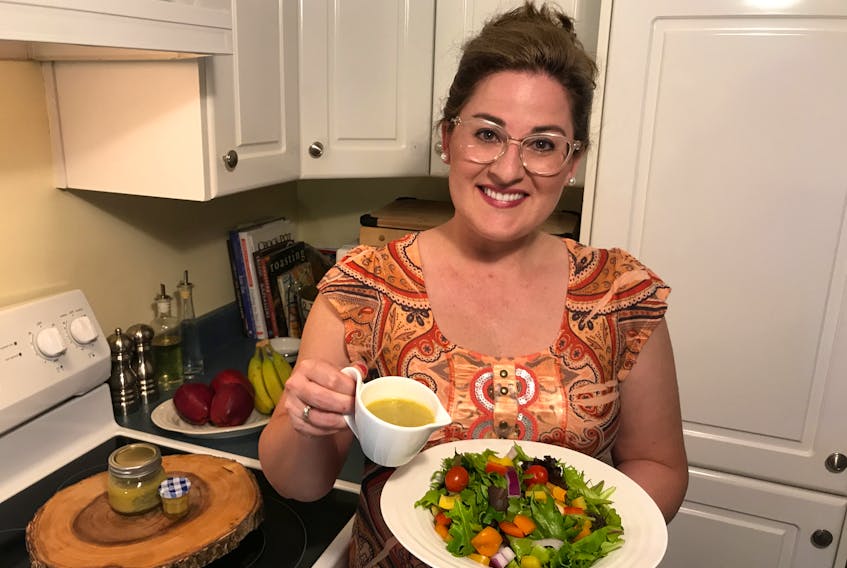Salad dressing can be the devil hiding on a colourful, healthy and crunchy vegetable filled salad. I’d say to say to myself, “Oh, I’ll just get a salad for lunch,” thinking I was making the responsible healthier choice. Leaving more options for supper.

Holy moley was I wrong! Have you looked at the ingredients of dressings on the grocery store shelves? Filled my dear. Filled with fat, sugar, calories, sodium and preservatives. It all tastes great but at the end of the day, depending on the dressing, you may as well have gone for the burger and fries. Ok, it’s probably not that bad but you get the point.
“To remember a successful salad is generally to remember a successful dinner; at all events, the perfect dinner necessarily includes the perfect salad.” – George Ellwanger
Don’t be fooled by the low-calorie or reduced-fat dressings. Remember, if they’re taking something out, what are they putting in its place? This is where reading your labels comes into play. Investing time into learning how to properly read a label is a healthy habit. After doing many interviews with nutritionists and dieticians over the years – I started shopping the perimeter of the grocery store as I am disgusted with many of the chemicals in most processed foods. It was an eye opener and I really don’t want to eat that stuff.
It’s not hard to take control of your salad dressing ingredients. The basic recipe for a simple vinaigrette dressing: one part vinegar to three parts oil plus salt and pepper to taste.
Use EVOO or a neutral flavoured oil like canola, vegetable, or grapeseed. White vinegar or balsamic, apple cider, rice, sherry or any other favourite vinegar with kosher salt and fresh ground pepper.

Here are a few additions for aromatic additions: chopped fresh herbs or dry herbs like dill, parsley, cilantro mint, or your favourites. Minced or roasted garlic. Fresh ginger. Freshly minced onion shallots or green onions. Grated bold cheese like Parmesan. Add Dijon mustard, sugar or honey as they acts as emulsifiers.
Homemade salad dressings have a delightful taste and they don’t weigh down your salad. You can’t beet it! Oh how I love a good vegetable pun. If you’re wondering what you can make, there is an endless supply of salad dressing recipes on Pinterest or search the internet. You’ll be pleasantly surprised at how many options are available with a few simple ingredients.
“Puberty for me was graduating from Thousand Island salad dressing to Caesar salads. It was like going from hot dogs and hamburgers to beef stroganoff, or from ice cream in a cone to crème brulee.” – Richard Simmonds
Making your own salad dressing also cuts down on food waste. Just open the fridge door - how many salad dressing bottles do you have on the door shelf? How many do you actually use up before the best before date? I know. I was ditching bottles that expired two years ago. Another reason to make your own!
You can make only what you need. Or, if you do consume copious amounts of salads, you can make several small batches to have a good variety to use throughout the week.
If you’re using fresh ingredients, you can pretty well use it right away. If there’s time, take the opportunity to let it marinate for about 15-30 minutes to let the flavours blend together. If you’re using dried ingredients, it’s best to let the dressing sit a little longer, up to two hours in the fridge.

“Why did the tomato blush? Because he saw the salad dressing.” – Unknown
Now you know how simple it is to make your own homemade salad dressing. Enjoy foodie friends. Homemade salad dressings are definitely fit to eat.
Erin Sulley is a self-confessed foodie who lives in Mount Pearl. Email [email protected]Twitter: @ErinSulley Instagram: @erinsulley
RELATED:








